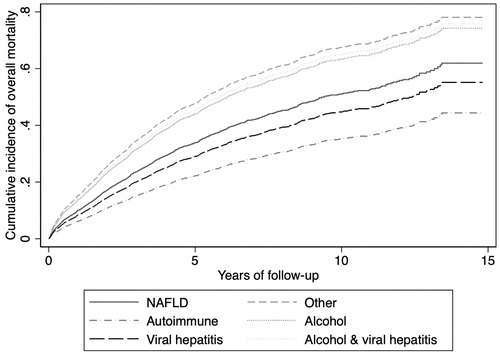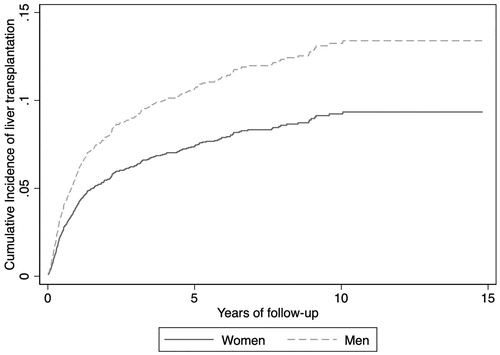Figures & data
Table 1. Baseline characteristics of the full cohort and stratified on sex.
Figure 1. Etiologies of cirrhosis in newly diagnosed cases seen at the Karolinska University Hospital during 2004–2017.

Figure 2. Cumulative incidence of overall transplant-free mortality stratified on etiology of cirrhosis during the study period, considering liver transplantation as a competing risk. Model is adjusted for age, sex, type 2 diabetes and Child–Pugh score at baseline.

Table 2. Number of persons with different etiologies of cirrhosis, seen at Karolinska University Hospital between 2004–2017, together with number of deaths prior to liver transplantation, and performed liver transplantations.
Figure 3. Cumulative incidence of liver transplantation in men and women during the study period, considering mortality as a competing risk. Model is adjusted for age, type 2 diabetes, etiology of cirrhosis and Child–Pugh score at baseline.

Table 3. Number of deaths and time-dependent area under the receiver operating characteristics curve for MELD and Child–Pugh scores to predict overall transplant-free mortality at specified timepoints considering liver transplantation as a competing risk.
